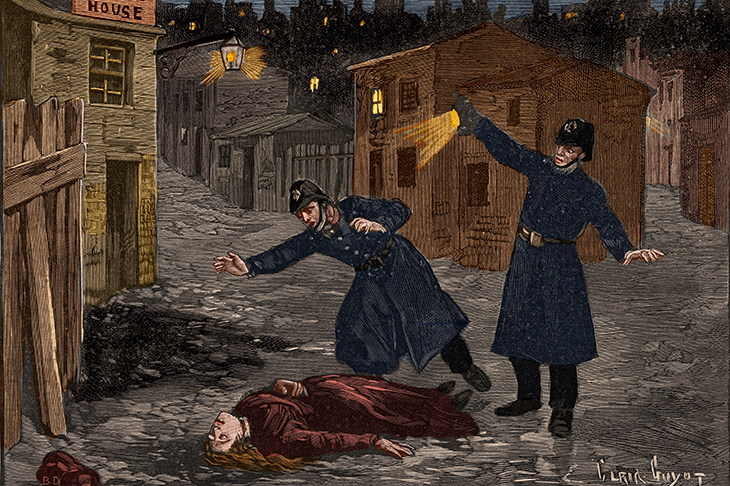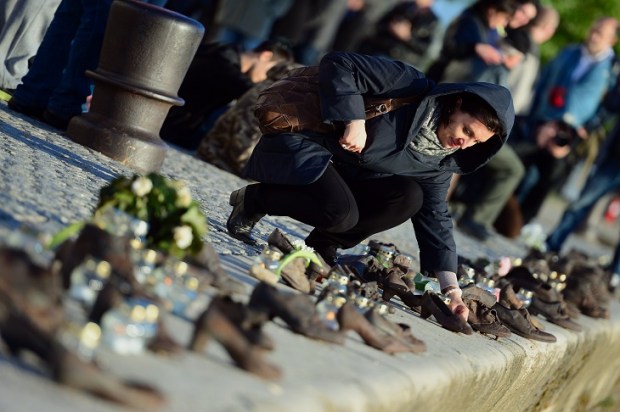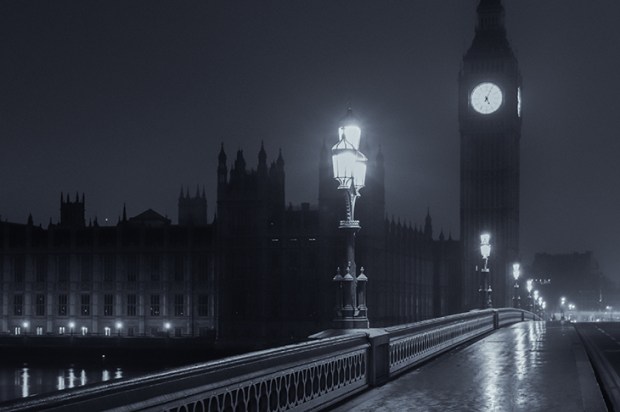Before she was the subject of true-crime mythologising, Catherine Eddowes made her living from it, selling ballads based on real-life murders to avid Victorian audiences. The historian Hallie Rubenhold suggests that Eddowes may have written them too; unusually for a working-class woman, she was literate. Still, the possible example of her work that Rubenhold reproduces in The Five shows no sign that female authorship led to incipient feminist consciousness. Typically for the 19th century (and still often seen in reporting today), Verses on the Awful Execution of Charles Christopher Robinson, for the Murder of his Sweetheart, Harriet Segar focuses attention on the femicidal man, investing sympathy in him rather than the woman he killed.
Eddowes’s own murderer is known only as Jack the Ripper, but from the time of his murders he was treated as a mix of titillating bogeyman and street-cleansing folk hero. The only thing anyone knows about Eddowes is that she was a prostitute, and even that’s not true. By Victorian middle-class standards, she was a fallen woman, living unmarried with one man and taking up with another after that relationship failed; but she did not sell sex. In fact, Rubenhold points out, Elizabeth Stride and Mary Jane Kelly were the only two of the five definitely known to be involved in prostitution, and it’s doubtful whether Elizabeth was even killed by the Ripper.
Ripperology is a feverishly productive industry, but a woeful field of study. For all the thousands of books, articles and documentaries made about the Victorian serial killer, the case is no closer to being cracked now than it ever was. Our cultural fixation on the Ripper has done little more than secure the anonymous murderer’s reputation as, in the words of Deborah Cameron and Elizabeth Frazer (authors of The Lust to Kill), ‘the most enduring sex beast myth’. So great is the Ripper’s hold over our collective imagination that, when almost a century later another spree of woman-killing began (this time in Yorkshire), the investigation, the coverage and the public response fell unthinkingly into the same script.
In the 1970s as in the 1880s, there was a hoax letter; there was misidentification of the victims as prostitutes and prurient judgment of the dead women; there was, vilely, compassion for the killer and even hero-worship at the fringes. But unlike Jack the Ripper, the Yorkshire Ripper was arrested, tried and convicted. Peter Sutcliffe’s victims received that much justice at least, although they have done little better in the public consciousness. Like the five, the 22 women Sutcliffe was found guilty of killing or assaulting are, writes Carol Ann Lee in Somebody’s Mother, Somebody’s Daughter, ‘defined by a single dynamic: “good-time girls”, or prostitutes, and those who were “respectable” ’.
The intent of these two books, then, is ostensibly identical: to return individuality and dignity to women who have been brutalised first by male violence and then by popular misogyny. They succeed, however, to very different degrees. One offers rich and compassionate portraits of not-always-lovable women negotiating a vicious world; one reads more like a slasher narrative, introducing a chain of victims in hackneyed pen portraits, only to off them in horrendous detail before moving onto the next. One has a framework and an analysis; one has little but bleakness and shock. One is written with elegance and drive; one, unfortunately, is not.
What makes The Five an outstanding work of history-from-below, and Somebody’s Mother, Somebody’s Daughter an almost unbearable grind is wholly a matter of authorship. There is — depressingly — not as great a difference as you might expect between the life of a woman at the edge of society in the Victorian era and one in the 20th century. In both periods, the biographies are marked by male violence and alcohol abuse. In this context, the women’s final encounter with their killer often appears as less of an unforeseeable cataclysm, more just another incident in a catalogue of cruelty.
Rubenhold takes each woman’s life as a window into the Victorian female experience. Through Mary Ann ‘Polly’ Nichols, she explores homelessness and poverty; through Annie Chapman, the class system and life in service. Stride — who was born in Sweden — has a story of immigration and, horribly, syphilis. Eddowes’s fall into poverty is framed by her family’s changing fortunes during the industrial revolution; and Kelly’s biography introduces the business of prostitution and sex-trafficking.
Rubenhold is frankly dismissive of the Ripper himself. He supplies the frame but — as her inclusion of Stride, despite her disputed status, shows — this is not a book about him. The women’s stories cut off at the point at which he cut them down: there is no lascivious description of wrenched-out wombs or scattered kidneys here, because that happened after death. It’s an extremely smart decision, and regrettably one that Lee does not follow. Every chapter of Somebody’s Mother, Somebody’s Daughter climaxes in a Crimewatch-esque vignette: a woman walks a lonely street, the dread bearded figure comes close, the hammer falls.
Part of the problem is that Sutcliffe was so prolific, meaning that Lee has a lot of stories to tell. But her failure to establish an overarching narrative or draw out common themes leaves them as an unenlightening litany of victimhood, and a rather pat prose story mitigates against individual characterisation. This is compounded by Lee’s bizarre decision to give a chapter over to Sutcliffe’s own testimony , which undermines the chance of these women being seen apart from what he did to them. She’s also oddly uncharitable towards feminism: despite her book’s supposedly feminist spirit, the extent of her engagement with the movement consists in making snippy asides about the Reclaim the Night marches, which were organised in response to police advice that women stay home.
Rubenhold, on the other hand, has a clear political angle, although she doesn’t make it explicit until near the end of the book. ‘A woman’s entire function was to support men,’ she writes of the Victorian social order; ‘the women at the bottom were driven like piles deeper and harder into the ground in order to bear the weight of everyone else’s demands.’ It’s a typically vivid image from a magnificently vivid book that shows how — despite the degradations inflicted by violent men, inept police and a bloodthirsty public — dead women can be given back their voices.
Got something to add? Join the discussion and comment below.
Get 10 issues for just $10
Subscribe to The Spectator Australia today for the next 10 magazine issues, plus full online access, for just $10.
You might disagree with half of it, but you’ll enjoy reading all of it. Try your first month for free, then just $2 a week for the remainder of your first year.














Comments
Don't miss out
Join the conversation with other Spectator Australia readers. Subscribe to leave a comment.
SUBSCRIBEAlready a subscriber? Log in